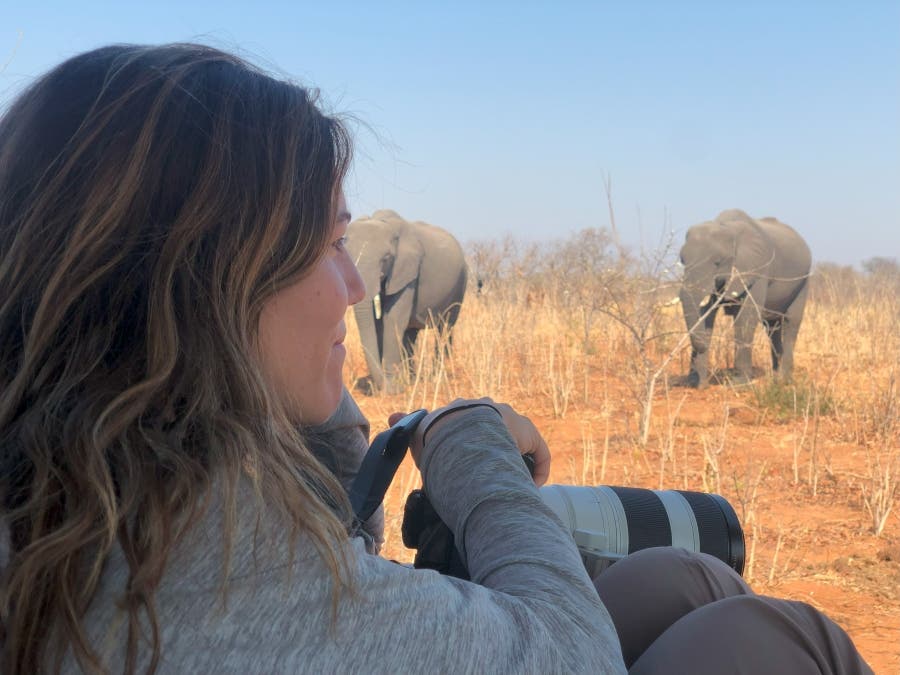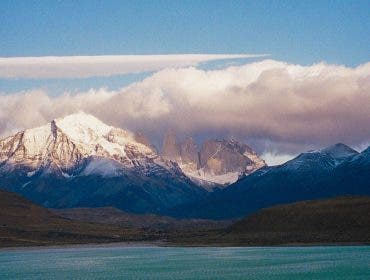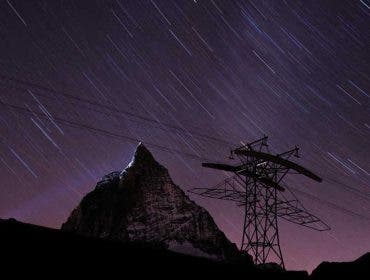When I quit my communications job to become a travel journalist in 2018, I had dreams of trotting around the globe in search of important stories of adventure and cross-cultural connection. What I didn’t realize? Just how much gear I’d need to report, photograph, and film these stories—especially now that travel journalists are writers, photographers, and videographers all in one.
Now, nearly seven years later, I’ve accomplished many of these feats, from writing a book for National Geographic to launching an astrotourism column with Outside Magazine. I’ve also curated a travel content kit I swear by, and I’m sharing the camera gear I think every travel journalist needs to make it as a creative storyteller today.
Camera
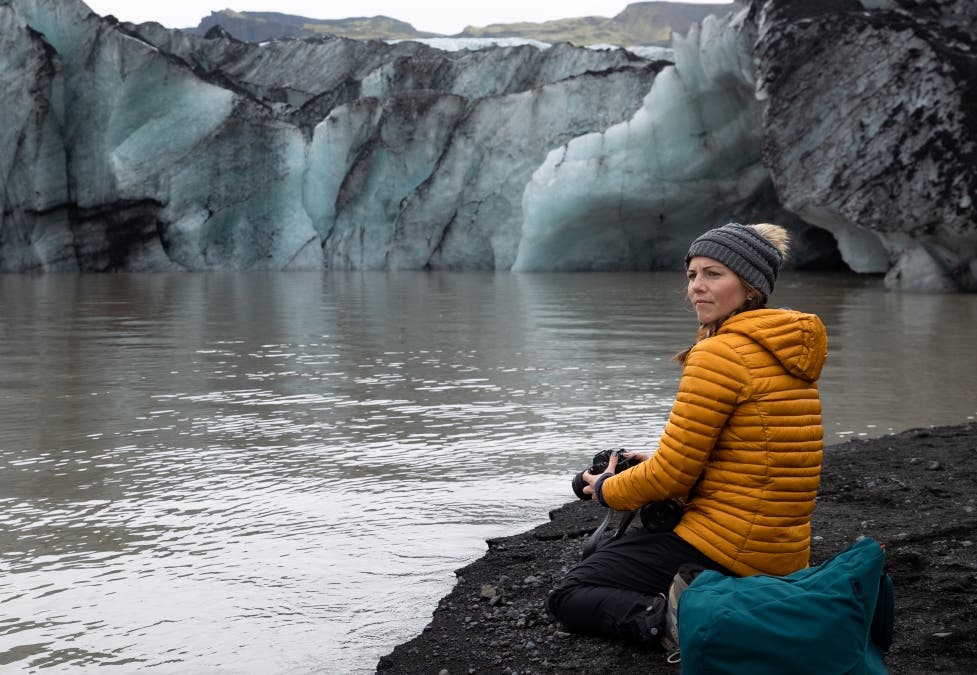
Many editors are looking for travel journalists who can not only write about a destination, but share original imagery to accompany their articles. Smartphones like a newer iPhone do work great in a pinch, but a DSLR or mirrorless camera can vastly improve your photo quality. (And if you can produce professional-level imagery, you can sell your stories as a package and make more money!)
I use the Sony A7III and Sony A7RIV, and would highly recommend the former camera, or the newer A7IV, for travel journalists who want a gadget that can grow with them. It’s easy to learn with a little practice and YouTube-tutorial watching. And, it’s equal parts a photo and video camera, so you can experiment with filmmaking, too.
Some additional beginner camera options that are ideal for travel journalists include the Nikon Z50 and Olympus OM-D E-M10 Mark IV. I highly recommend mirrorless cameras for the portability, because on carry-on-only photography expeditions, every ounce can add up.
Lenses
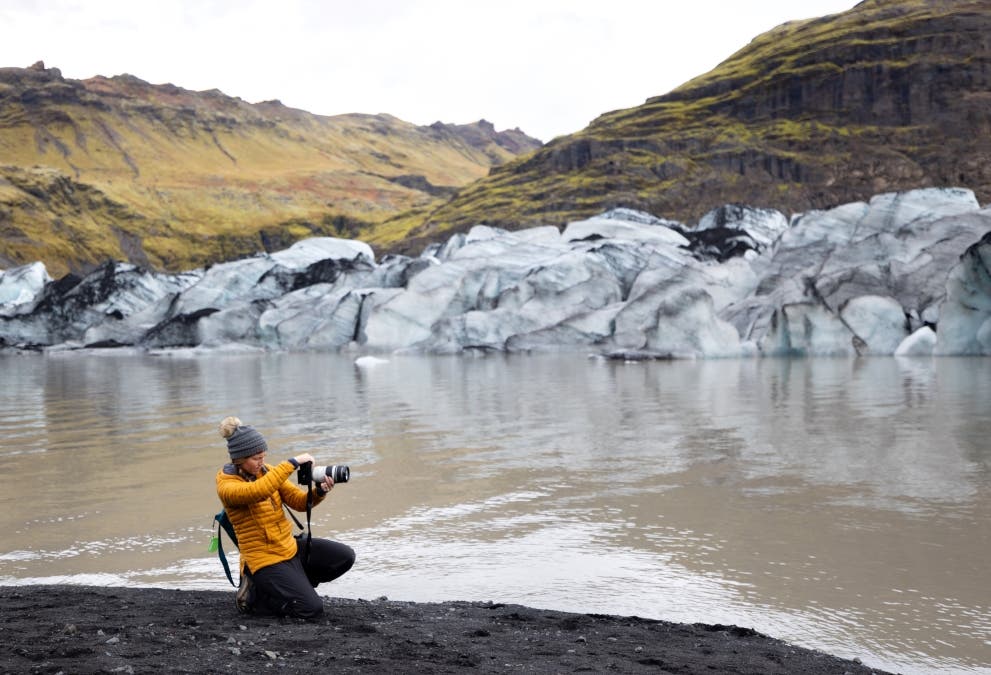
Once you have a camera, you’ll need a good lens or two. I’d recommend a zoom lens with focal ranges about 28-70mm or 24-240mm when you’re starting out. This will give you room for experimentation as you hone your craft and learn what types of imagery you hope to capture more of.
The more you go, the more you’ll add to your kit—something my pocketbook is all too familiar with. I’m a big fan of prime lenses because of the image crispness. I travel with a Sony a 50mm f/1.8 lens for food photos and portraits, a Sony 100-400mm f/4.5-5.6 for wildlife and compressed landscape shots, a 24mm f/1.8 for wide scenes, establishing photos, and astrophotography, and a 20mm f/1.8 for a second astrophotography camera. (I always have two astro cameras capturing different directions of the night sky at once.)
If you’re unsure which lens is best for you, or you need, say, a big telephoto lens for a dream wildlife cruise, you can also test out lenses before buying them with a photography rental program.
Action camera

I’m an adventure travel journalist, and that means I need a camera that can truly withstand the elements, be it diving, trail running, or anything in between. That’s why I always pack my GoPro Hero 12. (In fact, it’s what I used to shoot most of this National Geographic Travel video; I fastened it to my helmet with this strap.)
It’s lightweight at less than half a pound, and waterproof up to 33 feet on its own, or 196 feet with this protective housing I use for dive trips. The image quality is impressive for a camera of this tiny size (5.3K video at up to 60p and 27 megapixel images). It’s also handy for timelapse content. When I book a hotel with a good view, I’ll plug the GoPro into the wall to extend the battery life and let the camera run for hours—like I did for this timelapse in Sydney, Australia.
Tripod

If you’re hoping to do any night-sky photography, filming, or on-camera work, a tripod is an absolute must. I’m a huge fan of the Peak Design Travel Tripod because they’ve thought of everything with this gadget. It’s around three pounds and can hold up to 20 pounds of gear. It’s also sturdy, speedy to set up, and it has a built-in attachment for your smartphone.
That said, it does come at a high price point, which can be a lot for beginners. I also use the smaller Joby GorillaPod as a tripod for my second camera because it’s so compact and easy to pack, and it gets the job done. I recommend opting for the GorillaPod with a ball head; it’s a touch more expensive, but the composition flexibility is worth it.
Memory card holder

Sure, this goes without saying—you need memory cards to take photos—but you also need something to keep all of those little cards organized. (Otherwise you risk losing important content.) I use a memory card holder like this one because it’s sturdy enough to withstand jostling in the overhead compartment on an airplane, and it has a carabiner clip I can snap onto the inside of my pack. This gives me peace of mind that my precious footage and photography won’t accidentally fall out and be lost forever.
Another important feature is this card caddy also has space for microSD cards. Devices like the GoPro require microSDs, so you need somewhere safe to keep these, too.
External SSD

Photos and videos require a ton of digital storage space. That’s why I never store the RAW files (which, if you didn’t know, you should be shooting in RAW for better editing capabilities!) on an external SSD. I use the 4TB SanDisk Extreme Portable SSDs because they’re fast and portable—both essential qualities since I back up my content while I’m on the road.
While it’s more expensive, I do recommend investing in the 4TB size because these files add up, especially if you’re capturing video. And since I have several of these devices, I label them with tape and a Sharpie to avoid any confusion.
Portable power bank
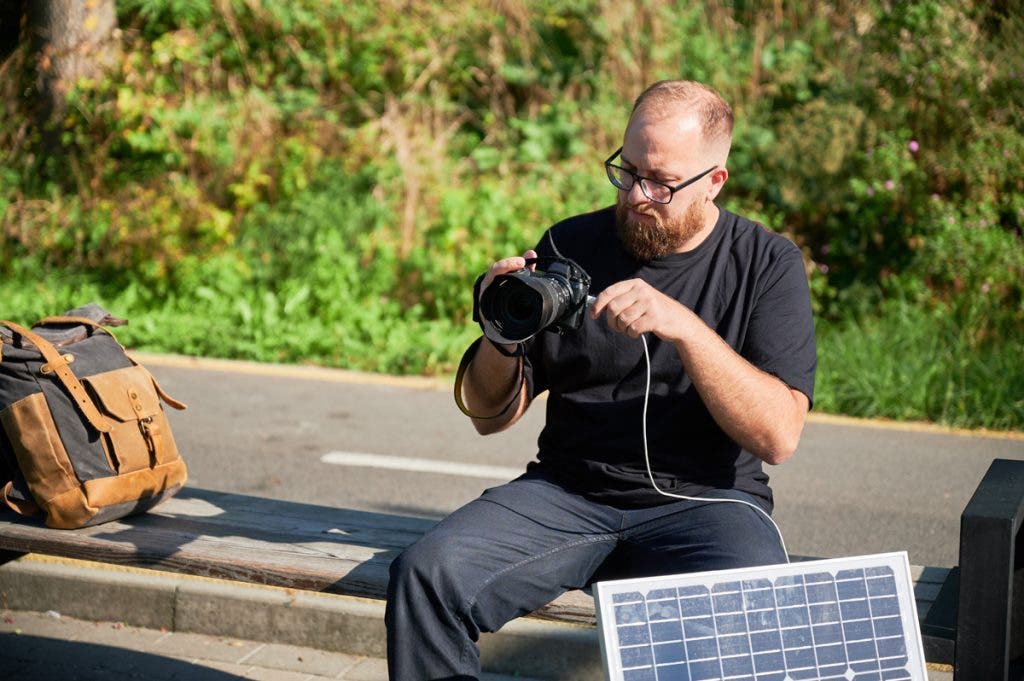
You’ll mostly find me photographing on my Sony Alpha cameras, but sometimes, like on strenuous backpacking trips, my iPhone 15 Pro Max has to get the job done. (I simply can’t juggle trekking poles, a 40-pound backpacking pack, and two cameras tethered to my chest!)
Thankfully, smartphones are incredible backup cameras these days, especially with RAW photography and 4K video. The thing is, smartphones also double as maps, weather forecasters, fitness trackers, and a host of other roles. That means smartphone batteries are put through the wringer. To keep my device ready to work, I always bring at least one, sometimes two, portable phone chargers with me. (This is a great portable option.)
Camera backpack

You’ll need something to carry all of this gear, and for that, I use the Shimoda Explore V2 30 Liter backpack. It’s created by outdoor adventure photographers, for outdoor adventure photographers, and you can tell.
They’ve answered so many adventure photographers’ prayers. The pack has numerous pockets for staying organized and quickly accessing essentials. What I love most is that it’s not just a camera backpack. There’s also room for toiletries, a laptop, and other odds and ends you need as a travel journalist, like an audio recorder and notebook.
If you’re hoping to take this gear on a big adventure—like a week of backpacking or a weekend of canoe camping—here’s my guide to capturing content in remote locations, from Greenland to the Galapagos.

